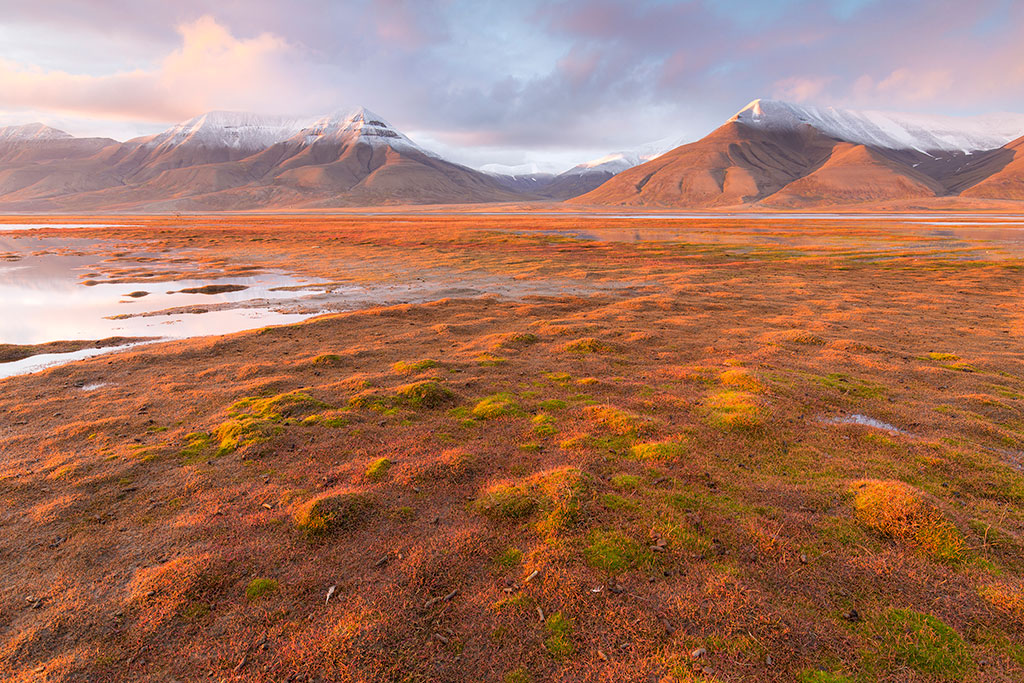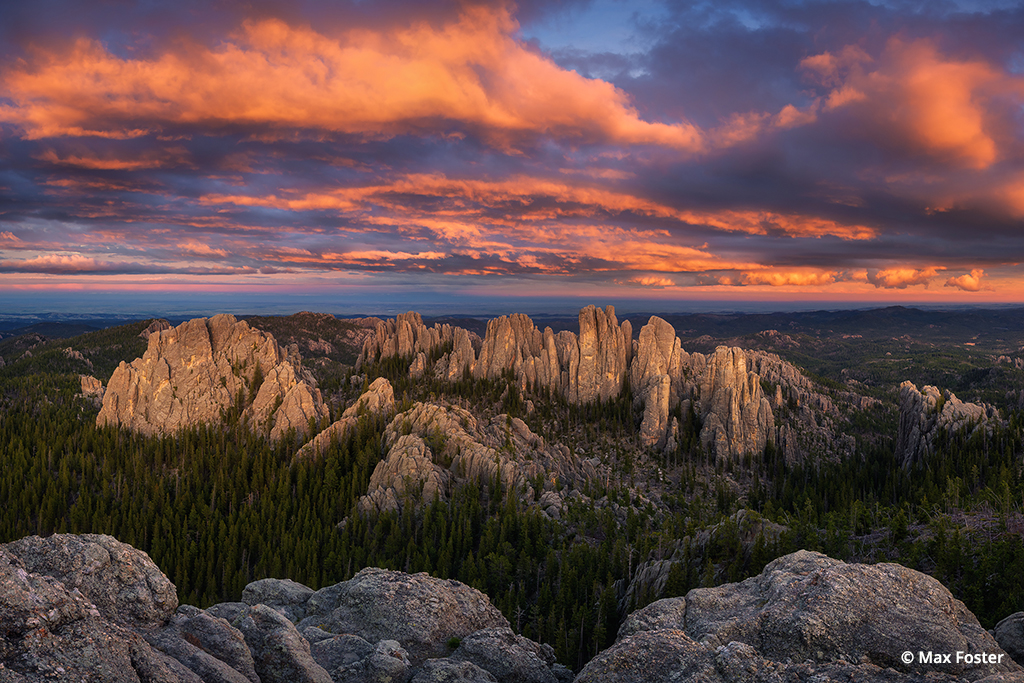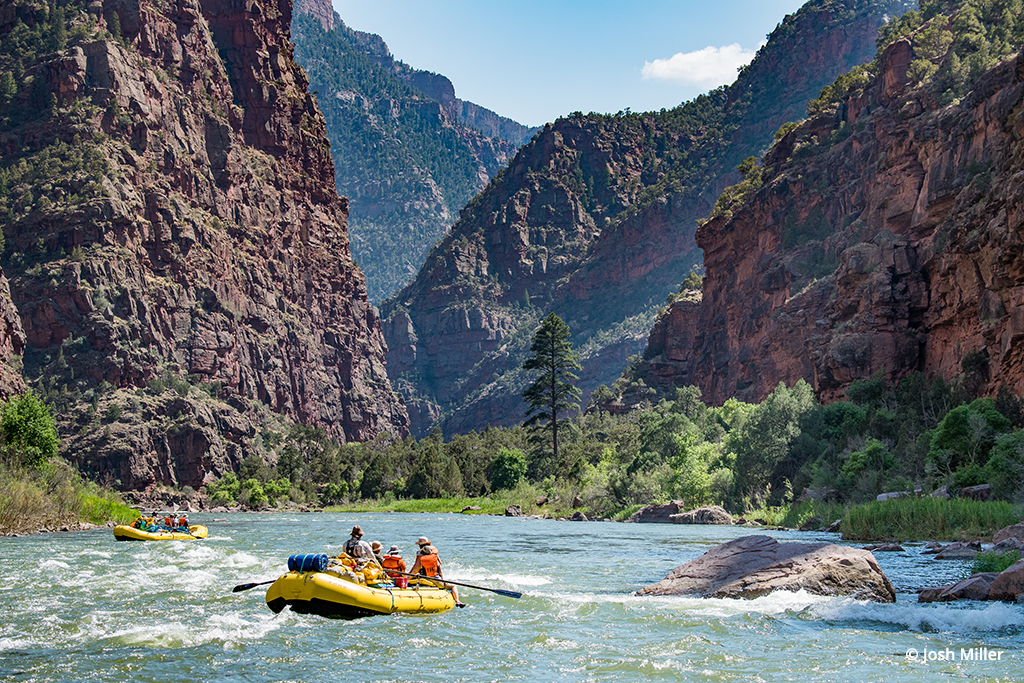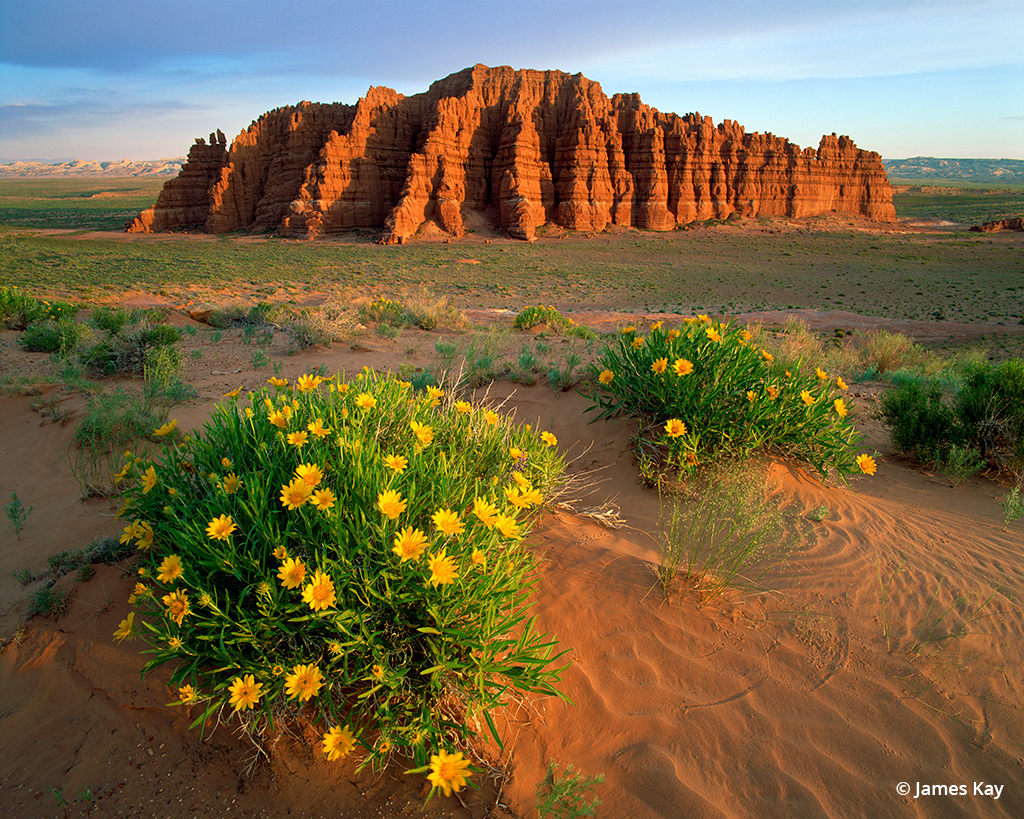Advertisement
Advertisement
Read Next

Why You Should Visit Svalbard In Norway For Photography
Svalbard in Norway features untouched...
The Needles
The Black Hills of South Dakota cover...
Dinosaur Adventure!
After feeling trapped at home for the...
Wildlands Of Utah
Look outside Utah's national parks to...Advertisement


Pro Winter Hotspots For Nature Photography
Winter is a proving ground for nature photographers. Cold temperatures take a toll on the body, snow and ice are poised to wreak havoc with photography gear, and short days reduce your time to find compelling scenes in the field. It’s not like crab fishing on the Bering Sea, but it’s not like the pastoral, warm days of summer, either. If you can tear yourself away from binge-watching seasons of Deadliest Catch in the comfort of a heated living room, however, winter serves up some of the best photo opportunities of the year.
We reached out to a number of pros to get their input on the best places for shooting at this time of year. You could fill a book with the possibilities, so let this guide be a starting point in your quest for the best winter photographs.
1 Location: Emerald Bay, Lake Tahoe, California
Photographer: Don Smith
I’ve been visiting Lake Tahoe since my youth. Fresh snow mornings were always exciting, especially because I loved to snow-ski. Now that I’m a landscape photographer, they’re exciting in a different way. Emerald Bay is always a great sunrise location, regardless of the time of year, but it’s especially interesting after a fresh snowfall, as the scene becomes transformed into a kaleidoscope of light and color.
After three late-season storms pounded the Tahoe Basin in 2011, I arrived in the dark, and I could see that the storms had subsided just enough for this magical warm dawn light to paint the sky and also reflect off the calm surface of the lake. The fresh snow allowed for detail on and around the pines that surrounded the bay. The best of the light came and went inside of two minutes, but it was one heck of a show!
Canon EOS-1Ds Mark III, Canon EF 16-35mm ƒ/2.8L USM, Singh-Ray LB Slim Polarizer, Singh-Ray 2-stop graduated neutral-density filter
See more of Don Smith’s photography at www.donsmithphotography.com.
2 Location: Bryce Canyon National Park, Utah
Photographer: Stephen Oachs
I often spend a few winter weeks each year in the desert Southwest. It’s a much cooler climate, there are few tourists and, if Mother Nature cooperates, snowfall across the alien landscapes makes for some fantastic photographs like the photograph here.
In December of 2010, I was in Arches National Park and conditions had been less than ideal. I began researching the weather to help me decide which direction to head next. When I saw there was a large cold front expected to blow over western Utah the next morning, I made the decision to pack up my motor home and make the long drive from Arches to Bryce. Under normal conditions, this would only be a few hours’ drive; however, the winter conditions would prove to make it a much, much longer journey.
I left from Moab around 4 o’clock in the afternoon and drove nearly all night, arriving in Bryce just in time for sunrise. As I walked up to the scenic overlook, a bus full of tourists was swarming about. I could tell that the early-morning light was going to be great, so I did my best to work my way to the railing and set up, all the while, tourists bumping into me as they took their snapshots. After about an hour of panoramic shooting, I returned to my motor home for much needed warmth and a catnap!
This photograph is actually not one single photo, but 60 images captured in sequence using a multi-row panoramic technique that allows each image to be joined together with software. The end result is an extremely high-resolution photograph. In this image of Bryce Canyon, the final stitched combination is equal to a 551-megapixel photograph and contains enough resolution to be printed the size of a billboard with fine-art quality. (See the article “Gigapixel” by Stephen Oachs on his technique in the November issue of OP)
See more of Stephen Oachs’ photography at www.apertureacademy.com.
3 Location: Piedras Blancas, California
Photographer: Cathy & Gordon Illg
About 20 minutes north of San Simeon, Piedras Blancas has become an important elephant seal rookery. The first elephant seal came ashore here in the early ’90s, and the first pup was born on this beach a few years later. More than 3,500 elephant seal pups will enter the world at Piedras Blancas this winter, mostly in January and February. You can access the areas via a boardwalk to several hundred yards of shoreline crowded with elephant seals.
Elephant seal bulls usually display and posture a great deal before fighting, so photographers often have time to get into position before the fight occurs. One bull usually retreats quickly, often before a blow has been struck. Many times photographers get in position for nonexistent or very short fights. As with any wildlife behavior image, there was some luck involved in taking this one because we hardly had to move at all, as these two bulls began throwing their weight around, and they went at it for several minutes. When they took their fight into the surf, though, that was when it truly became exciting. Both of us were shooting, one wide with a 100-400mm zoom and the other tight with a 500mm. We decided we liked the tight version better because it was more unusual. How often do you get to look down the throat of an elephant seal?
Canon EOS-1D Mark II, Canon EF 500mm ƒ/4L IS II USM
See more of Cathy and Gordon Illg’s photography at www.advenphoto.com.
4 Location: Yosemite National Park, California
Photographer: Gary Hart
I can’t imagine any sight on Earth more breathtaking than Yosemite with fresh snow. Given its relatively warm temperatures and frequent sunshine, photographing Yosemite Valley blanketed with fresh snow requires being there during the storm. Yosemite’s storms clear from west to east, so I usually hang out at Tunnel View during the storm’s most intense periods, when most of Yosemite’s recognizable features are obscured by clouds. As the clouds part to reveal a winter wonderland, that’s the perfect position to capture the classic Yosemite clearing storm images made popular by Ansel Adams, Galen Rowell and many others. With the snowmelt clock ticking, I usually leave Tunnel View even before the show there is over and make a mad dash to as many of the other Yosemite Valley spots as I can. Moving from west to east, I target popular locations like Valley View, El Capitan Bridge, Cathedral Beach and Cook’s Meadow, plus a number of unnamed spots along the Merced River.
Canon EOS-1DS, Canon EF 17-40mm ƒ/4L USM
See more of Gary Hart’s photography at www.garyhartphotography.com.
5 Location: White Sands National Monument, New Mexico
Photographer: Justin Black
While White Sands can look snowy anytime of year, the white stuff is gypsum, not ice crystals. Visitation slows to a trickle in winter, which means the dunes are blown clean of footprints. This is a photographer’s playground where careful design and minimalism rule composition. Don’t count on balmy temperatures, though. The dunes sit at the bottom of a basin, and temperatures can be downright frigid first thing in the morning.
Nikon D800E, PC-E Nikkor 24mm ƒ/3.5D ED tilt-shift, Really Right Stuff TVC-24L tripod and BH-55 ballhead
See more of Justin Black’s photography at visionarywild.com.
6 Location: Bosque del Apache National Wildlife Reserve, New Mexico
Photographer: Russ Burden
Bosque del Apache National Wildlife Reserve, located in New Mexico along the Rio Grande River, is unrivaled for its bird photography. Sandhill cranes appear in the thousands and snow geese are measured in the tens of thousands. The birds flock to the refuge from November through February. The best photography occurs from mid-November through mid-January. Each morning and evening, the skies erupt, as both species fly from ponds to feeding areas and back again. Many species of ducks frequent the area, along with eagles, hawks, owls, herons and egrets. If you’re lucky, the rare whooping crane will be present. The flight photography opportunities are off the charts. In that the birds fly in and out at each sunrise and sunset, it simply doesn’t get any better. Bosque del Apache is a must-visit in the winter if you love to photograph birds.
Nikon D200, AF-S DX Nikkor 18-200mm ƒ/3.5-5.6G ED VR II
See more of Russ Burden’s photography at www.russburdenphotography.com.
7 Location: Yellowstone National Park, Wyoming
Photographer: Ian Plant
Yellowstone is a world beyond our own, emerging from the mists of time as a remnant of days long past. Here, the engines of creation still churn, steaming with all the fury of the gods of old. Winter is the time when Yellowstone is at its most desolate and desperate—and its most beautiful. Clear, cold mornings are best for wildlife and landscape photography, as everything—landscape and wildlife alike—is covered in a layer of frost from geothermal steam. Look for bison, elk, coyotes, bighorn sheep and wolves struggling to survive the cold, along with a host of smaller critters. The northern road from Gardiner to Cooke City is kept open to autos (which grants access to Mammoth Springs and Lamar Valley, two photography hot spots), whereas winter access to the rest of the park’s interior is by snow coach or snowmobile tour only. Stay a few nights at the Old Faithful Snow Lodge for the ultimate Yellowstone winter experience.
Canon EOS-1Ds Mark II, Canon EF 24-105mm ƒ/4L IS USM
See more of Ian Plant’s photography at www.ianplant.com.
8 Location: Costa Rica
Photographer: Roger Devore
Toughing it out in the cold to photograph fresh snowfall is all well and good, but winter is also a perfect time to head south where equatorial sunshine gives you a chance to photograph richly colored tropical environments. Costa Rica offers outstanding opportunities for both unique wildlife and landscapes. Winter is the dry season there, which makes it a particularly good time for photographers.
Sony a77, Sony 70-400mm ƒ/4-5.6 G2
See more of Roger Devore’s photography at www.natureworkshops.com.
9 Location: Anhinga Trail, Everglades National Park, Florida
Photographer: Russ Burden
Florida is arguably the best state in the country to create spectacular bird images. Everything from dramatic portraits to behavioral interaction can be photographed, often at short distances. The approachability factor has to be experienced to be believed. Winter is an ideal time to visit the active birding locations. This time of year, at Anhinga Trail in the Everglades, the birds are found in gorgeous breeding plumage, displaying mating rituals, gathering nesting materials and rearing their young. These are great photo opportunities to capture behavior, and you can do it in a T-shirt and shorts—great photography and great weather! Species that can be found along the Anhinga Trail are snowy egrets, great egrets, great blue, green, tricolor and little blue herons, ibis, red shoulder hawks, osprey, anhinga and cormorants in addition to many more species of birds and mammals. It’s a wildlife photographer’s paradise.
Big telephoto lenses are most commonly used, but there are so many birds that can be approached, they’re not a necessity. If you do carry a long lens, support it on a tripod. A second body with a medium telephoto zoom is advantageous for birds that are close. A flash with a Better Beamer will help on overcast days and to fill in shadow areas.
Nikon D300, AF-S Nikkor 200-400mm ƒ/4G ED VR II, Induro C313 tripod, Wimberley head
See more of Russ Burden’s photography at www.russburdenphotography.com.
10 Location: South Rim, Grand Canyon National Park, Arizona
Photographer: Tom Till
I try to visit Grand Canyon at least once or twice every winter. I wait for storms coming from the Pacific, travel to the park before the storm strikes, and shoot when the storm starts to break up and the air is clarified and the snow is fresh. At 7,000 feet, the South Rim is a snow magnet during most years, flocking the forests above on the canyon’s edges and filling the chasm with alpenglow and moody mists. Sunrise at Mather Point is a favorite spot; the desert east of the canyon is less likely to hold clouds and allows streamers of light to slip in below the clouds. Don’t expect these conditions to last for too long. The fresh snow often has a short shelf life, and your magnificent scene can vanish before your eyes if the sun appears and the clouds depart.
Nikon D800E, AF-S Nikkor 70-200mm ƒ/2.8G ED VR II
See more of Tom Till’s photography at www.tomtillphotography.com.
11 Location: Cape Hatteras National Seashore, North Carolina
Photographer: Richard Bernabe
The stretch of Highway 12 that traverses the entire north-south length of Hatteras Island in North Carolina affords easy access to mile after mile of wild, windswept sand dunes. The dunes themselves and wild sea oats provide for some compelling foregrounds for wide-angle compositions, particularly at sunrise and sunset. The narrow ribbon of land allows spectacular views of both the Atlantic Ocean and the Pamlico Sound from the same spot! This time of year, the tourists who flock to the Outer Banks in summer are nowhere to be seen and the pristine Cape Hatteras National Seashore has a feeling of profound solitude. After a winter storm, you can get lucky and photograph a fresh coating of snow on the dunes, which makes for a surreal image.
Canon EOS 5D Mark II, Canon EF 24-105mm ƒ/4L USM
See more of Richard Bernabe’s photography at www.richardbernabe.com.